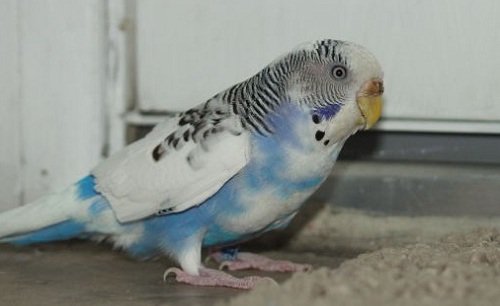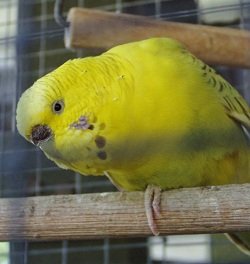Training parakeets | Dos and don'ts
Training parakeets is something every owner wants to do so he could play with his pets. It is so much nicer to have a trained pet bird that can talk.
So how to train your parakeet?
Parakeets are very smart and they can learn rather fast. So with some patience on your side you will have a finger trained bird in no time.
All you need to know is a few simple steps and these dos and don'ts.

What are the "dos" of parakeet training?
As I have already said, first comes patience. It will be the base of your work with the bird. Just give your best and as we all know, when you work hard you will have success.
Talk to him. Talk to him all the time. When you approach the cage, when you change the food and water, when you start the training. Spend some time every day just being in front of the cage and talking to him. Do it in a soothing voice.
Tell him he is a good bird when he does something right. Even give him some reward like millet or some other parakeet candy.
Mistakes people make while training parakeets
 First
mistake is that people start too soon. You
should not start training your pet bird until it is settled in its
cage.
First
mistake is that people start too soon. You
should not start training your pet bird until it is settled in its
cage.
I usually give some time to the parakeet so he can get used to the new home. Some people say a week. I sometimes let them be longer, it all depends how fast is he getting used to the new surrounding.
It is not a matter of time but the bird and the environment. If you see your bird is calm when you give it food and its only been two days, maybe your bird is ready.
But if it flies like crazy when you approach the cage, than the bird is not ready. That means you will start from scratch.
This is what mostly happens to birds bought in pet shops. They are growing up in a flock and they are not trained. They are basically wild birds.
It is different if you buy a bird from a breeder that is training parakeets before he sells them. In this case you might get a calm bird from the first day.
Adopt a bird -- you can often find trained parrots in shelters.
I would not give a specific time on how much is it going to take you to get your bird not to be afraid. It can take days or weeks. It depends on how much time you have on your hands to work with the bird. It also depends on the birds character, since every parakeet has one of its own.
Never approach the bird with sudden moves and try not to gesticulate near him. He might feel threatened and the last thing you want is the bird being feeling the need to fly away.
So if you are over the first mistake (starting too early) I come to the second big mistake. Parakeet owners sometimes want to move forward too fast.
 You
need to be patient with your little bird. It can't learn
everything at once. The best thing would be to let him learn one
thing completely before starting with another one.
You
need to be patient with your little bird. It can't learn
everything at once. The best thing would be to let him learn one
thing completely before starting with another one.
Again, patience is the key word when it comes to training parakeets. So if you feel like taking your new parakeet for a walk on your shoulder you might want to reconsider.
Very important thing NOT to do is yell at your parrot. He is not human and he does not understand. So all you can accomplish by yelling is a scared and frustrated bird. You need to repeat the thing you are trying to teach him over and over again and he will learn.
If you yell at your parrot he will just become more scared and you can loose a several months' worth of work with him in just a few short minutes.
Another no-no is being mean to your pet. If you keep punishing him it will only provoke a counter effect. No parakeet owner should hit the bird.
They are very sensitive and weak so even the slightest hit can hurt the bird severely or even kill it.
So, you know the dos and don'ts now, I guess all we need to know now is training parakeets the proper way. Just skip to parakeet training tips and tricks.
Related articles
Budgie
parakeets
Handling
a new parakeet
Parakeet
health
Choosing
a pet bird
Go from
training parakeets to Cool Small Pets home page
Comments
Have your say about what you just read! Leave me a comment in the box below.